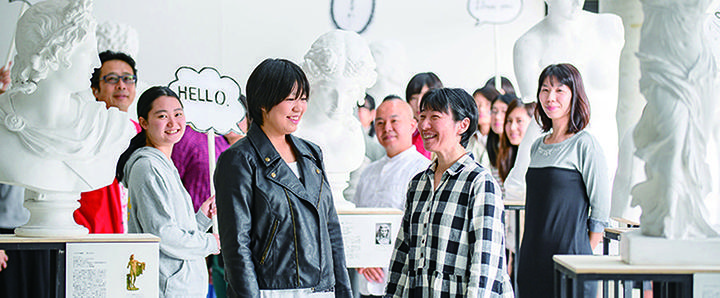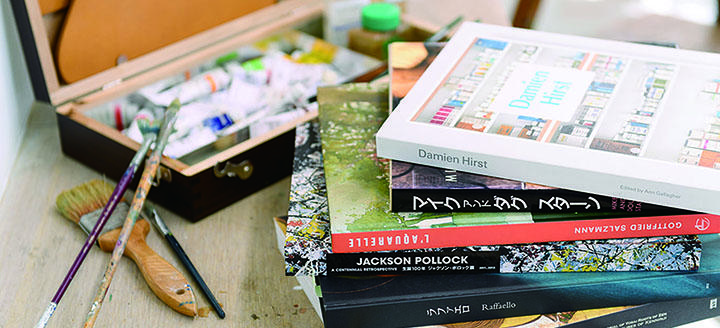 Curriculum
Curriculum
The Department of Aesthetics and Art History consists of four areas: (1) Aesthetics as a theoretical section, (2) Art History as a historical section, (3) Art Practice as a practical section, and (4) Art Management, which crosses and combines these areas.
1. As first-year education, we offer a rich foreign language education and a diverse liberal arts education with the "Arts Program" at its core.
2. In specialized education, students study basic subjects in four areas. From the second year, students deepen their specific knowledge and enhance their skills through lectures. From the third year, students choose a mentor and clarify their own research interests through seminars, and deeply consider the subject of their research through small-group mentoring. They also prepare for their graduation thesis or graduation project by writing assignment reports.
3. In the fourth year, students complete a graduation thesis or graduation project as a final result of four years of study and research through individual and small-group mentoring.
4. Through education at all grade levels, students will not only gain a deep understanding of the role of the arts in society, but will also achieve personal growth by actually making a contribution to the community through the arts.

Features
Choice: Graduation Thesis or Graduation Work
The Department of Aesthetics and Art History offers students the opportunity to acquire a wide range of knowledge and skills about art and beauty. Upon graduation, students may choose to complete a thesis or a work of art. For Aesthetics, which is a theoretical and philosophical study, Art History with a focus on Japan and the West, and Art Management, which is cross-disciplinary, students are expected to write a graduation thesis. In the Art Practice course focusing on painting and design, students are expected to produce a graduation work.
Note that the practical skills courses are not mandatory, and those who find them difficult do not need to take them.
Extensive Facilities, Including Art Practice Building and Gallery
Unusually for a Faculty of Letters, the Department offers a wide range of practical classes in painting, design, sculpture, crafts, computer graphics, web, and video, with instruction available even to students with no prior experience. Students work day and night in the dedicated Art Practice building, and exhibitions are actively held in the attached gallery. In the printmaking room, students can learn the process of making copper plates and transferring them to paper using a press. The design room is fully equipped with Macintosh PCs, providing an excellent environment for computer-based production.
Active Community Collaboration
Today, diverse activities are being developed in various regions with art and design. The Department collaborates with various organizations such as local governments, municipalities, associations of commerce and industry, companies, and museums to plan artistic activities and art projects, and to develop designs.
Field Study in Summer
The Department offers a special program called "Field Study" of Japanese Art History. Every year during the summer vacation, students visit temples, shrines, and museums in Kyoto and Nara to appreciate masterpieces. The experience of coming into contact with these works of art with all five senses is exceptional.
Arts Program
This program consists of a variety of contents to stimulate curiosity, including "Invitation to the Arts" and "Talking about the Arts" lectures by faculty members, "From the Frontlines of the Arts" featuring leading artists, and "Into the Field of the Arts" to experience practical sessions in collaboration with the local community.
